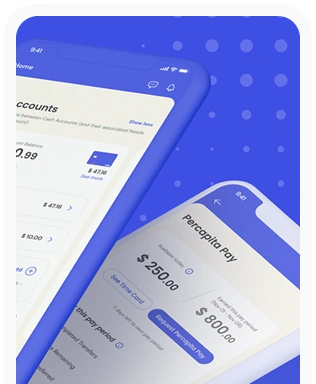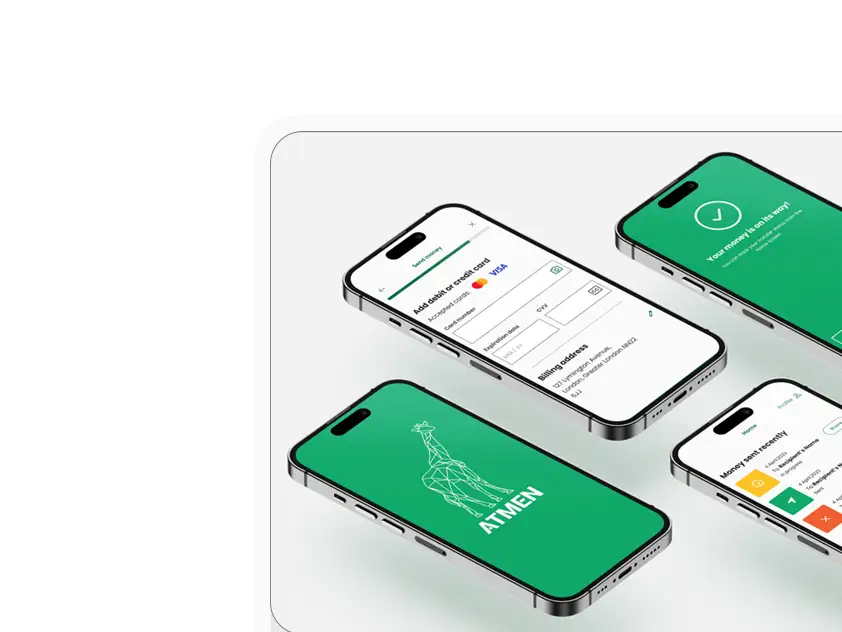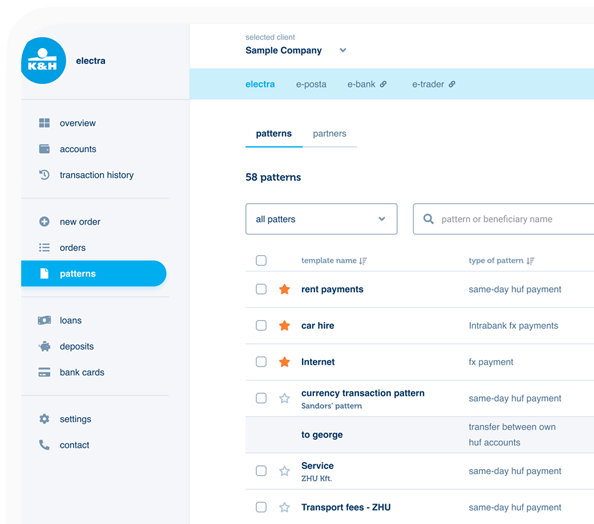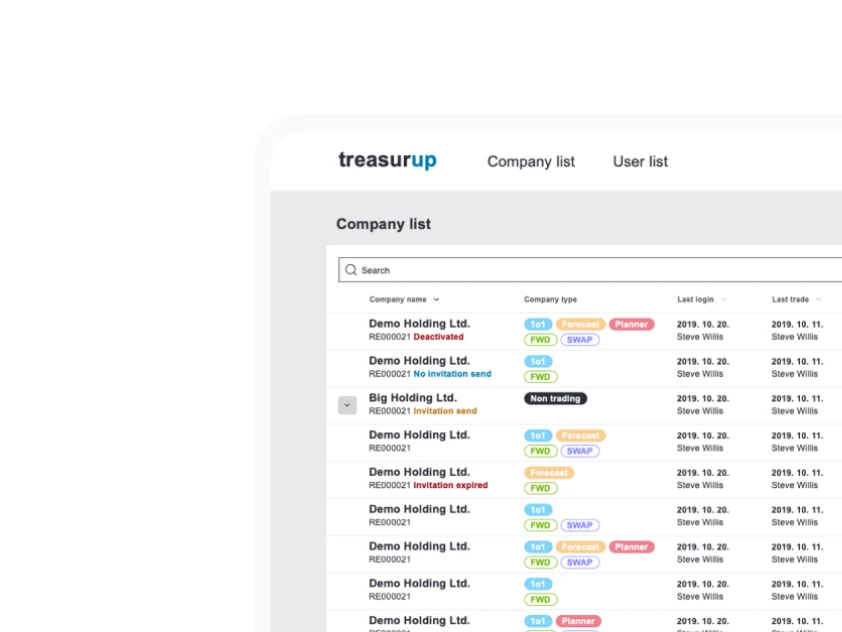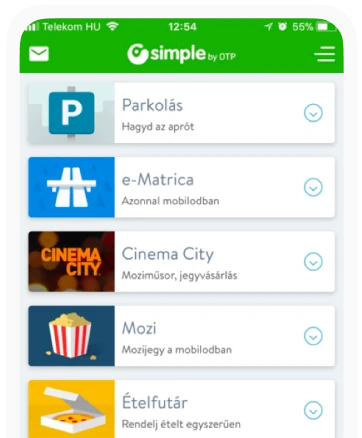10 UX Trends Shaping the Future of Design in 2025
2025 is going to be an exciting year in terms of technology and design for sure (although it looks like we won't have much to complain about in other areas either). With the rapid advances in artificial intelligence (AI), AI agents are bringing newer and newer solutions to UX design, but also drawing attention to ethical considerations. Design for accessibility is becoming an essential requirement, and the rise of virtual and augmented reality (VR/AR) could open up new areas not only for user experience but also for professional use.
Sustainability as a consideration is pushing designers toward more environmentally conscious solutions, as is the need for data security and calm technology. Inspiration could come from Asia and even South America, and in digital finance, crypto could conquer new areas alongside family banking. Let's look at the key movements that will shape the digital world, highlighting the most important 2025 design trends – and beyond.
1. AI in UX: Hyper-Personalization, Ethical Design, AI Agents
In a few turbulent years, artificial intelligence (AI) has gone from scaring people with Skynet and “archived” images of the Kandahar giant to completely transforming and even disrupting business (although it is still worth checking the Facebook group, Cursed AI, from time to time; some pretty damning videos have been made lately, notably starring Gordon Ramsey). In 2025, one trend we can expect to see is AI-driven hyper personalization, such as financial apps offering investment strategies based on a user's risk appetite and goals, or webshops recommending products to us with uncanny accuracy.
This level of AI use comes with significant responsibilities, so there will be an increasing role for ethical AI use: businesses need to ensure - and at the same time convince their customers - that AI is being used fairly. For example, that it does not lead to bias or discrimination (think of the impact this would have on, for example, credit applications), and that it does not use shady practices and dark patterns, i.e. methods that trick or deceive users ("There is only one pair of the shoes you want, and another user is looking at them!")
Another major trend could be the emergence of agent-based AI, where AI takes the initiative in predicting our needs and acts accordingly. Think here of AI agents that can organize meetings, write emails, or even solve customer service problems on their own, without consulting their owner. This would also have a huge impact on user expectations, for example for faster, more accurate customer service. In this respect, those who are missing out are really missing out.
And finally, AI as a Service (AIaaS) will allow smaller businesses to use this technology in the same way as larger ones. This democratization - at least in this area - could level the playing field as more and more players will be able to offer advanced AI-driven experiences and services.
2. Accessible UX Design: Moral Imperative and Business Opportunity
Accessible design will become an even more prominent UX design trend, certainly in the EU, where the EU Accessibility Act will enter into force in member states in the summer of 2025. But even so, more and more users expect products and services to be as accessible as possible, simply for moral reasons. Of course, inclusive design is not only a moral imperative, it’s also economically beneficial: new markets worth billions of dollars open up when companies take as many users into account as possible, not to mention the significant brand image gains that can be achieved.
Compliance with accessibility also leads to new creative solutions, the so-called curb cut effect, named after the small ramps built into sidewalks that are useful not only for wheelchair users but also for many other people. Similar classic examples include keyboard navigation, subtitling, contrast displays, and voice control , but if this is a key UX design consideration from the start, there are bound to be innovations that we may not even be able to imagine now.
3. Blurring the Line Between VR, AR, and XR
Virtual reality (VR) and augmented reality (AR) technologies have long progressed beyond being mere entertainment gadgets; they are being increasingly integrated into everyday life. In 2025, this tendency may further strengthen as one of the key UX trends, not only in user experience but also in professional embrace, impacting UI/UX design. For example, VR will allow workers to take part in training courses in a risk-free environment (there have been many examples of this before, such as flight simulators, but VR could be a major step up, cheaper, more usable, and customizable in almost any field). AR can project digital information onto the real world, providing real-time assistance for complex tasks, navigation, displaying additional information about products or even in museums.
A somewhat newer concept is mixed reality (XR), a combination of VR and AR. It can, for example, allow surgeons to perform complex surgeries, architects to display their designs in 3D, or tourists to see historical landmarks come to life.
4. Sustainability: Designing for a Greener Future
Sustainability is no longer a trend; green design will increasingly become a more general business principle among 2025 design trends (it is an industry-specific choice, and let's not get into the greenwashing debate; let's stay in the tech world). Consumers increasingly demand products and services that consider the environment, and companies must tackle this challenge. Sustainable use of materials, waste reduction in manufacturing, and reduced energy consumption are all important aspects, as is what happens to the device at the end of its life cycle. The long-vaunted modularity can gain new strength: instead of throwing out the entire unit when it breaks, only the broken piece can be substituted.
In the field of technology and UX design, the sustainable design aspect can bring innovations such as AI-based planning of sourcing and logistics of raw materials in a greener way. But we can also expect AI to optimize resource use and intelligent machines that minimize energy consumption. Cloud services can reduce energy consumption by distributing tasks more efficiently between servers. AI can also make a big difference in other areas, such as predicting problems from air and water quality data and weather data, reducing the environmental burden on agriculture, and even playing a role in waste management and recycling.
5. Data Security and Zero-Knowledge Proofs
All this technology, and of course our dependence on it, brings with it growing concerns about data security and privacy, so the near future may see the rise of solutions such as zero-knowledge proofs (ZKPs), a new type of cryptographic protocol that allows one party to prove to the other that it possesses certain information without revealing the information itself. It sounds complicated, but in simple terms, it is a way of, for example, verifying your age without revealing your date of birth, or your bank balance without having to show your bank statement.
This technology could bring huge changes in different sectors. In healthcare, it could allow us to share data without revealing the identity of the patient. In digital finance, we could authenticate transactions without sharing other financial data. As a remote example, ZKPs could even be used by election systems to ensure secure and verifiable voting.
6. Calm Technology
The deluge of notifications, updates, and other digital stimuli is incredibly tiring and distracting, and this is increasingly recognized. We still need the technology itself, and it is not in the interests of manufacturers to put their users into digital detox or suspend services altogether, so the future is increasingly quiet – or calm – technology. The aim of this approach is to make technology part of our lives, but without demanding constant attention. Think of smart devices in the home that communicate without intrusive warnings and even anticipate our needs if possible, or wearable devices that provide subtle feedback rather than sending a barrage of messages.
More intuitive user interfaces and less cluttered UI/UX design are also part of this, but so is an app that proactively filters irrelevant or distracting information or elements, for example, without being noticed. We can expect further developments in the world of devices that adapt to the environment to be less distracting (e.g. a smartwatch that senses how noisy the environment is, and adjusts the volume of notifications accordingly).
7. From East to West (and back)
There is a global flow of inspiration in the world of design and UX trends, as elsewhere of course, so we look forward to seeing how Asia, among so many others, fertilizes the world of fintech and digital finance. The proliferation of super-apps or payment solutions flourishing there is already visible, and we will continue to see them trickle down to the west in 2025.
A good example is the proliferation of QR codes. They are certainly not unknown here, but in Asia, they have become much more part of everyday life. Not only are they used to take us to a URL, for example, but they are used for everything from mobile payments to restaurant menus. In Europe, too, more and more people are recognizing the possibilities. Quik in Hungary is a good example in digital finance, offering a QR code solution in addition to NFC or unique link payment.
 Vendor at a Thai market with QR payment
Vendor at a Thai market with QR payment
There are also interesting new developments in Latin America, where Nubank in São Paulo is shaking up the financial world. It's a digital bank that in just over ten years has amassed 90 million users not only in Brazil, but also in countries such as Mexico and Colombia. They offer simple, understandable, user-friendly solutions and innovative UI/UX design rather than complicated and bureaucratic processes. With a strong emphasis on technology and innovation, of course; this could be a warning to traditional western banks.
8. Cryptos and Stablecoins: Demystifying Digital Finance
Although the person next door is probably already playing crypto (or so they say - whether we like it or not), these technologies are still rather mystical and therefore inaccessible to the general public. 2025 could bring a change in this respect: cryptocurrencies and stablecoins will become increasingly integrated into mainstream digital finance, but their uptake will depend on ease of use and security, in addition to accessibility. Crypto wallets and exchanges will be made available through increasingly user-friendly interfaces (with neo-banks also leading the way, of course), so that the technology can be understood and used by the average person through thoughtful UX design.
Stablecoins pegged to fiat currencies (i.e. official money issued by a government, e.g. the US Dollar) could play a huge role here. These, while also being blockchain-based technologies with all the advantages that brings (such as transparency, efficiency – and independence from the traditional banking world, which may be very attractive to many, for whatever reason), are more or less free from the huge fluctuations in crypto exchange rates. The average user, who has only heard that one day everyone who invests in Bitcoin is a millionaire and the next day it's worth a tenth of that, will be much more willing to invest in these coins and use them.
9. How Family Banking is Transforming Digital Finance
While the traditional banking approach focuses on the accounts and transactions of individuals, family banking builds on the recognition that families are financially connected. There is a growing trend, or rather demand, for family finances to be understood and managed to some degree jointly by all, transforming digital finance. Of course, there are financial institutions (especially neo-banks) where it is easy to set up a joint account or a separate account for each child, but family banking goes several steps further. Imagine a shared platform where families can set goals (e.g. save together for a holiday or something more expensive), track joint spending, and make financial decisions together in a transparent, simple and, most importantly, shared way.
A huge role here is to have customizable entitlements for joint accounts (e.g. don't let your 10-year-old spend the monthly food budget on Robux), and to build in financial awareness solutions for different age groups (because let's not think that only children need such things).
10. Animations and Micro-Interactions
Animations and micro-interactions are nothing new in UI/UX design; they have been used for a long time, but 2025 could see their further proliferation and refinement. Think of things like when you fill in a line in a form and a little green tick immediately appears rather than indicating a possible error when you want to submit, or animated or hover-animated icons, buttons or animated confirmation signals after a click.
This is not just about esthetics or making an interface fancy, although it does add a lot to it. It also defines the personality of the brand (e.g. a unicorn running across the screen when a task is clicked is cool for Asana, but it would be weird for a corporate banking app,).
Just as importantly, thoughtfully implemented micro-animations guide the user, improve navigation, make certain functions clearer, and thus overall increase usability in UI/UX design. They are also visual cues that highlight what is important, direct attention, show where action is needed, and make the user feel less lost. These are key points for UX design trends in 2025.
2025, promises to be an exciting and challenging year – not just in terms of how technology and the digital world evolve and change, but also in terms of what we make of it in the field of UX design. How can we, as designers, find the balance between technological possibilities and human needs and values? As for UX trends, ethics and data security will be keywords, as will sustainability, accessibility, hyper-personalization and, of course, not going crazy in the 0-24 digital flood.
 VR painting - Photo by
VR painting - Photo by

